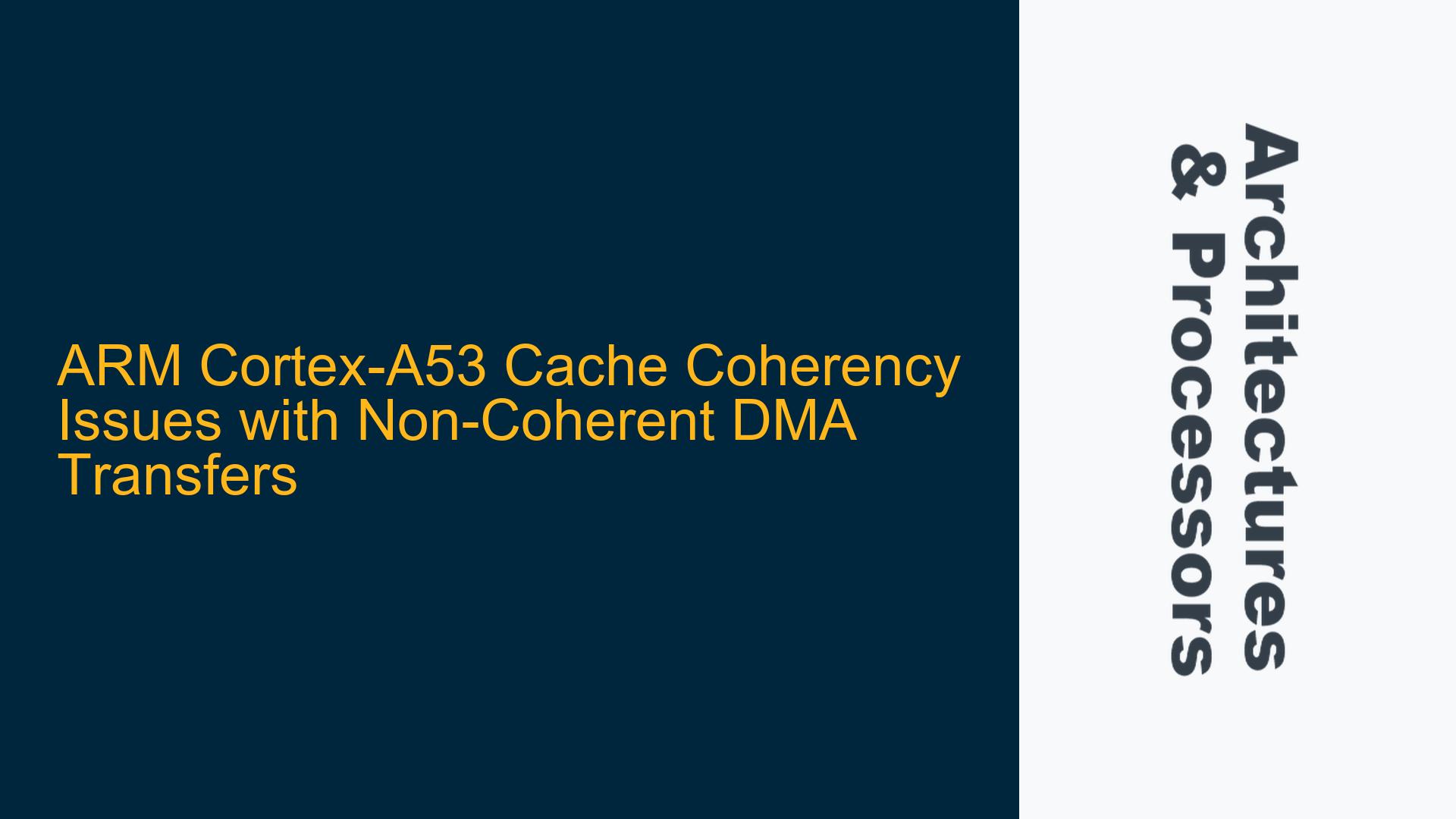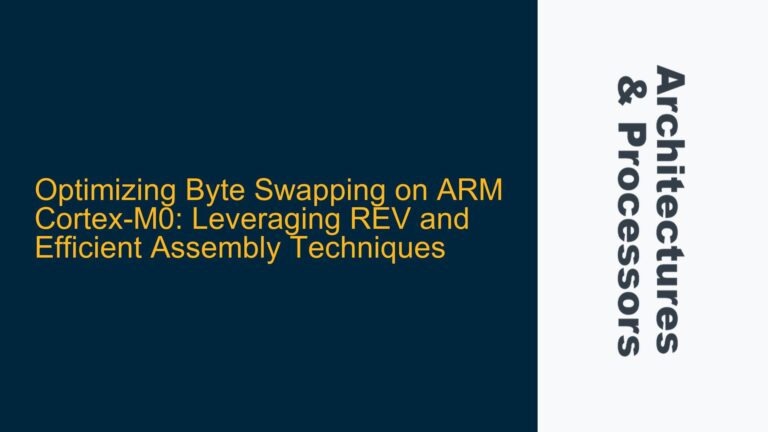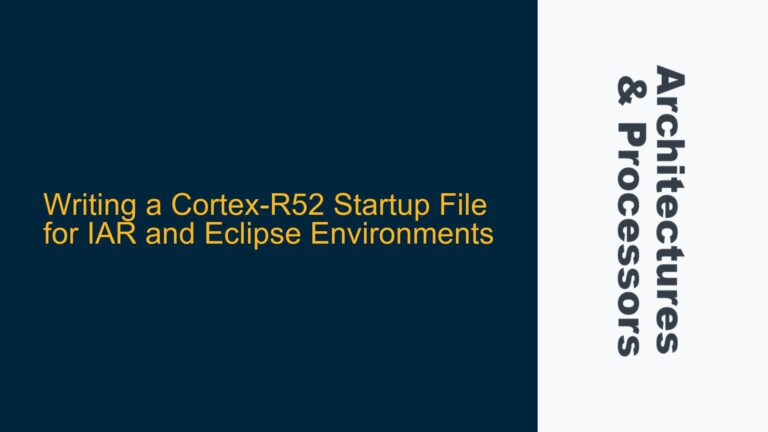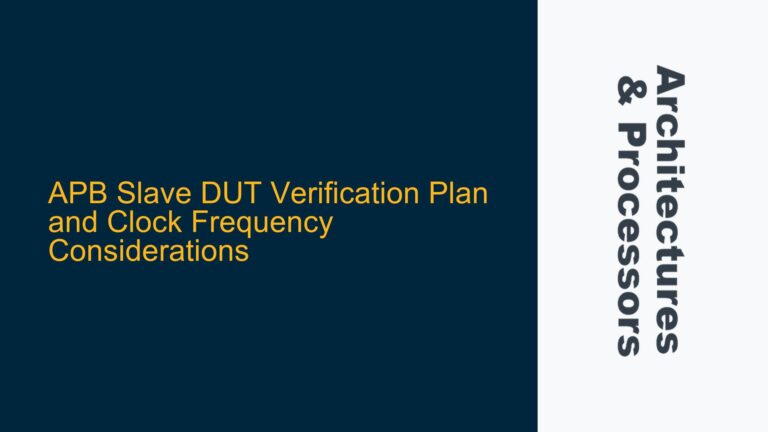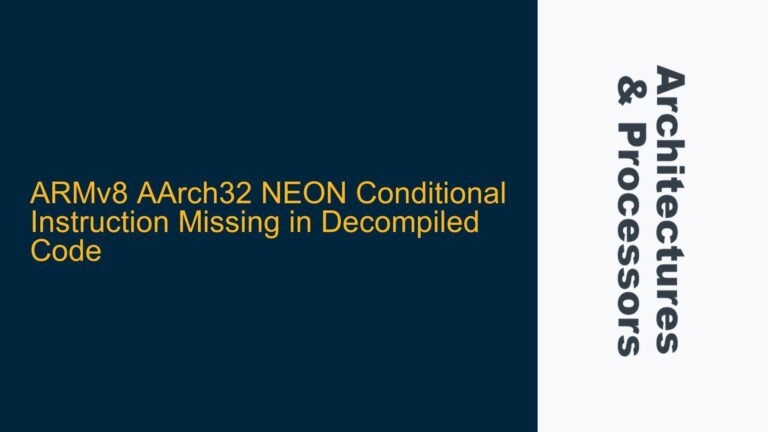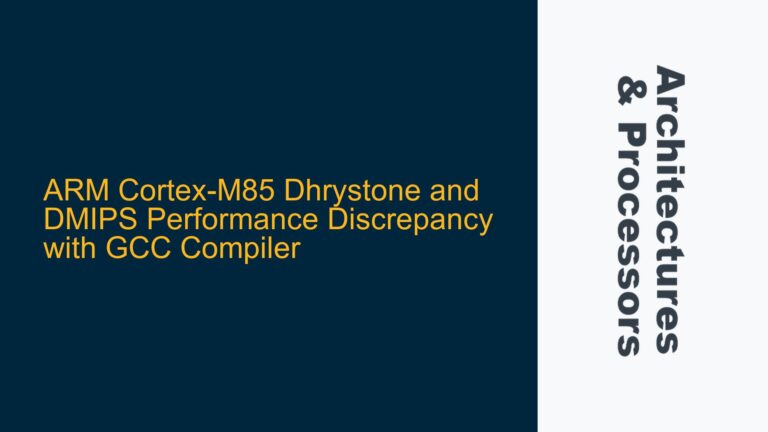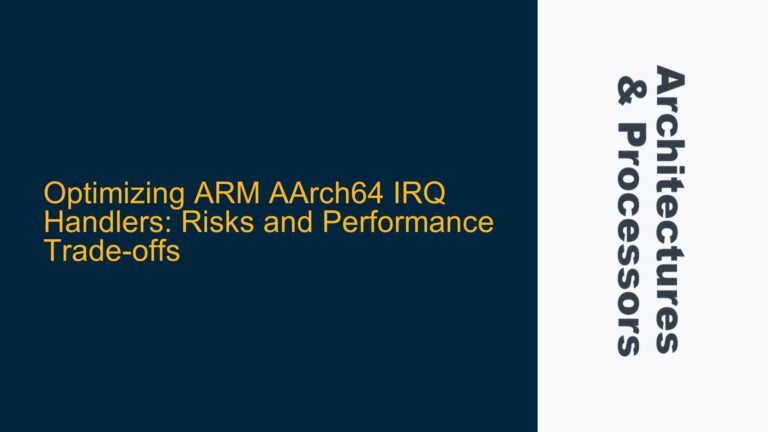ARM Cortex-A53 Cache Coherency Problems During Non-Coherent DMA Transfers
The ARM Cortex-A53 processor, a widely used 64-bit ARMv8-A core, is designed with a hierarchical cache architecture, including L1 and L2 caches, to optimize memory access latency and bandwidth. However, when dealing with Direct Memory Access (DMA) transfers from non-coherent hardware masters, such as an FPGA or other peripherals, cache coherency becomes a critical issue. The Cortex-A53 relies on hardware and software mechanisms to maintain cache coherency, but these mechanisms can fail when DMA operations bypass the Cache Coherent Interconnect (CCI). This leads to scenarios where the CPU may read stale data from its cache, unaware that the underlying DDR memory has been modified by an external agent.
In systems where DMA operations are performed by non-coherent masters (e.g., an FPGA writing to DDR memory via an AXI bus), the Cortex-A53 cache controller is not automatically notified of changes to the memory. This results in a lack of synchronization between the cached data and the actual memory content. The problem is exacerbated when the DMA operations occur outside the scope of the CCI, as the cache controller cannot monitor or invalidate the affected cache lines. This issue is particularly relevant in heterogeneous systems, such as the Xilinx ZYNQ MPSoC, where ARM cores and FPGA logic share the same DDR memory but operate independently.
The core of the problem lies in the inability of the Cortex-A53 cache controller to detect changes to memory regions that are modified by non-coherent DMA operations. Without explicit software intervention, the CPU may continue to use stale cached data, leading to incorrect program behavior. This issue is not immediately apparent in all cases, as the cache may be invalidated or updated due to unrelated memory operations, masking the problem temporarily. However, in long-running systems or under specific workloads, the lack of cache coherency can cause data corruption or system failures.
Memory Barrier Omission and Cache Invalidation Timing
The primary cause of cache coherency issues in the Cortex-A53 during non-coherent DMA transfers is the omission of proper memory barriers and cache management instructions. The Cortex-A53 cache controller does not automatically monitor memory regions modified by non-coherent masters, as these operations occur outside the CCI. This means that the cache controller has no visibility into changes made by DMA transfers unless explicitly instructed by software.
Another contributing factor is the timing of cache invalidation operations. In systems where DMA transfers are frequent, the cache may be invalidated or updated due to unrelated memory operations, creating a false sense of coherency. However, this is not a reliable mechanism, as it depends on the specific memory access patterns and workload. Without explicit cache invalidation or cleaning operations, the CPU may read stale data from its cache, unaware that the underlying memory has been modified.
The lack of hardware coherency between the DMA engine and the Cortex-A53 cache controller further exacerbates the problem. In systems where the DMA engine is not connected to the CCI, the cache controller cannot automatically invalidate or update cache lines affected by DMA transfers. This requires software to manually manage cache coherency, which can be error-prone and inefficient if not implemented correctly.
Additionally, the Cortex-A53’s cache architecture introduces complexities when dealing with non-coherent DMA transfers. The L1 and L2 caches are designed to optimize performance for coherent memory access patterns, but they do not account for modifications made by non-coherent masters. This can lead to scenarios where the cache contains stale data, even though the underlying memory has been updated by a DMA transfer.
Implementing Data Synchronization Barriers and Cache Management
To address cache coherency issues in the Cortex-A53 during non-coherent DMA transfers, a combination of data synchronization barriers and explicit cache management instructions must be implemented. These measures ensure that the CPU observes the correct memory state and that the cache is properly invalidated or cleaned before accessing memory regions modified by DMA transfers.
The first step is to use Data Memory Barrier (DMB) and Data Synchronization Barrier (DSB) instructions to enforce memory ordering. These instructions ensure that all memory operations preceding the barrier are completed before any subsequent operations are executed. This is particularly important when signaling between the CPU and the DMA engine, as it guarantees that the DMA transfer has completed before the CPU attempts to read the updated data.
The next step is to explicitly invalidate or clean the cache lines corresponding to the memory regions modified by the DMA transfer. The Cortex-A53 provides several cache maintenance instructions for this purpose, including DC IVAC (Data Cache Invalidate by Virtual Address to Point of Coherency) and DC CIVAC (Data Cache Clean and Invalidate by Virtual Address to Point of Coherency). These instructions ensure that the cache lines are either invalidated or cleaned, depending on the specific requirements of the system.
For example, if the DMA transfer overwrites a memory region, an invalidate operation (DC IVAC) is sufficient to ensure that the CPU reads the updated data from memory. However, if the DMA transfer modifies only a portion of the memory region, a clean operation (DC CVAC) may be required to ensure that any dirty cache lines are written back to memory before the DMA transfer begins.
The following sequence of instructions demonstrates how to implement cache coherency for a non-coherent DMA transfer:
-
Signal the DMA Engine: Use a store instruction to send a flag to the DMA engine, indicating that the CPU has completed its operations and the DMA transfer can begin.
STR W0, [X3] ; Send flag to DMA engine -
Wait for DMA Completion: Use a load instruction to wait for a flag from the DMA engine, indicating that the transfer has completed.
WAIT_ACQ: LDR W5, [X4] ; Wait for flag from DMA engine CMP W5, #1 ; Check if flag is set B.NE WAIT_ACQ ; Loop until flag is set -
Invalidate Cache Lines: Use the DC IVAC instruction to invalidate the cache lines corresponding to the memory region modified by the DMA transfer.
DC IVAC, X1 ; Invalidate cache lines for memory region X1 -
Enforce Memory Ordering: Use a Data Synchronization Barrier (DSB) instruction to ensure that the cache invalidation is observed before any subsequent memory operations.
DSB SY ; Ensure cache invalidation is observed -
Read Updated Data: Use a load instruction to read the updated data from memory.
LDR W5, [X1] ; Read updated data from memory region X1
By following this sequence, the CPU ensures that it observes the correct memory state and that the cache is properly invalidated before accessing the updated data. This approach is particularly important in systems where DMA transfers are performed by non-coherent masters, as it guarantees cache coherency without relying on hardware mechanisms.
In addition to these software measures, system designers should consider the following best practices to minimize cache coherency issues:
- Use Coherent DMA Transfers: Whenever possible, use DMA engines that are connected to the CCI, ensuring that the cache controller is aware of memory modifications.
- Minimize Cache Pollution: Avoid caching memory regions that are frequently modified by DMA transfers, reducing the likelihood of cache coherency issues.
- Optimize Cache Maintenance: Use cache maintenance instructions judiciously, ensuring that they are applied only to the affected memory regions and not the entire cache.
By implementing these measures, system designers can ensure reliable operation of the Cortex-A53 in systems with non-coherent DMA transfers, avoiding data corruption and system failures caused by cache coherency issues.
